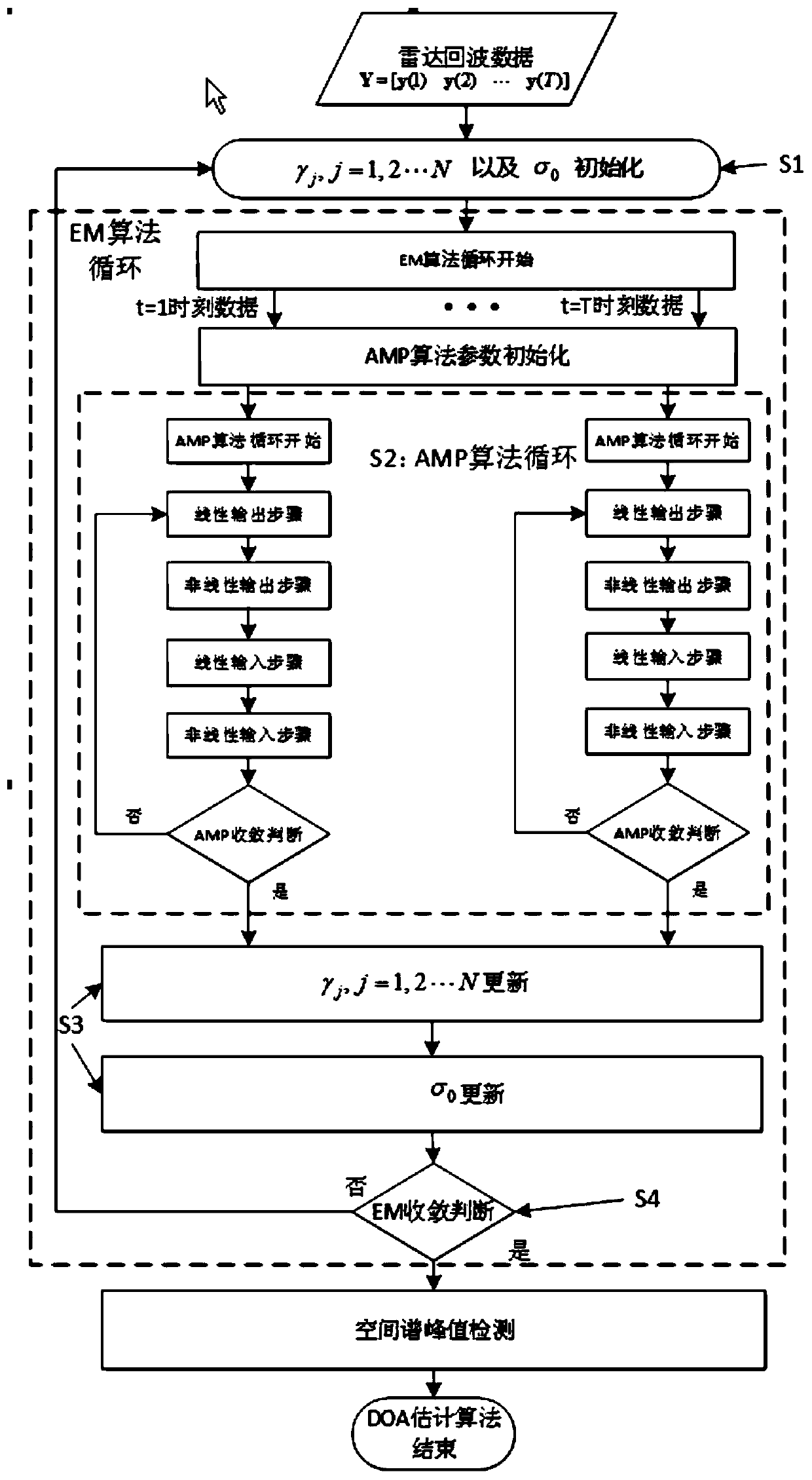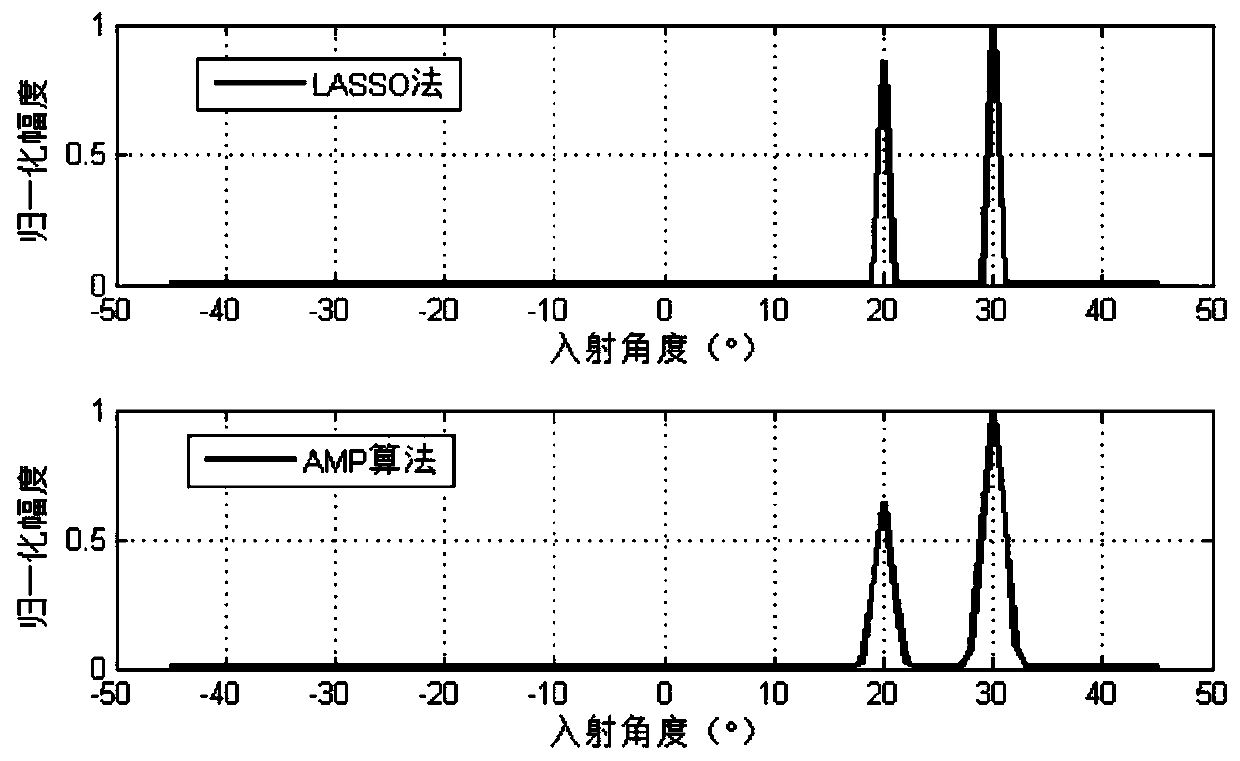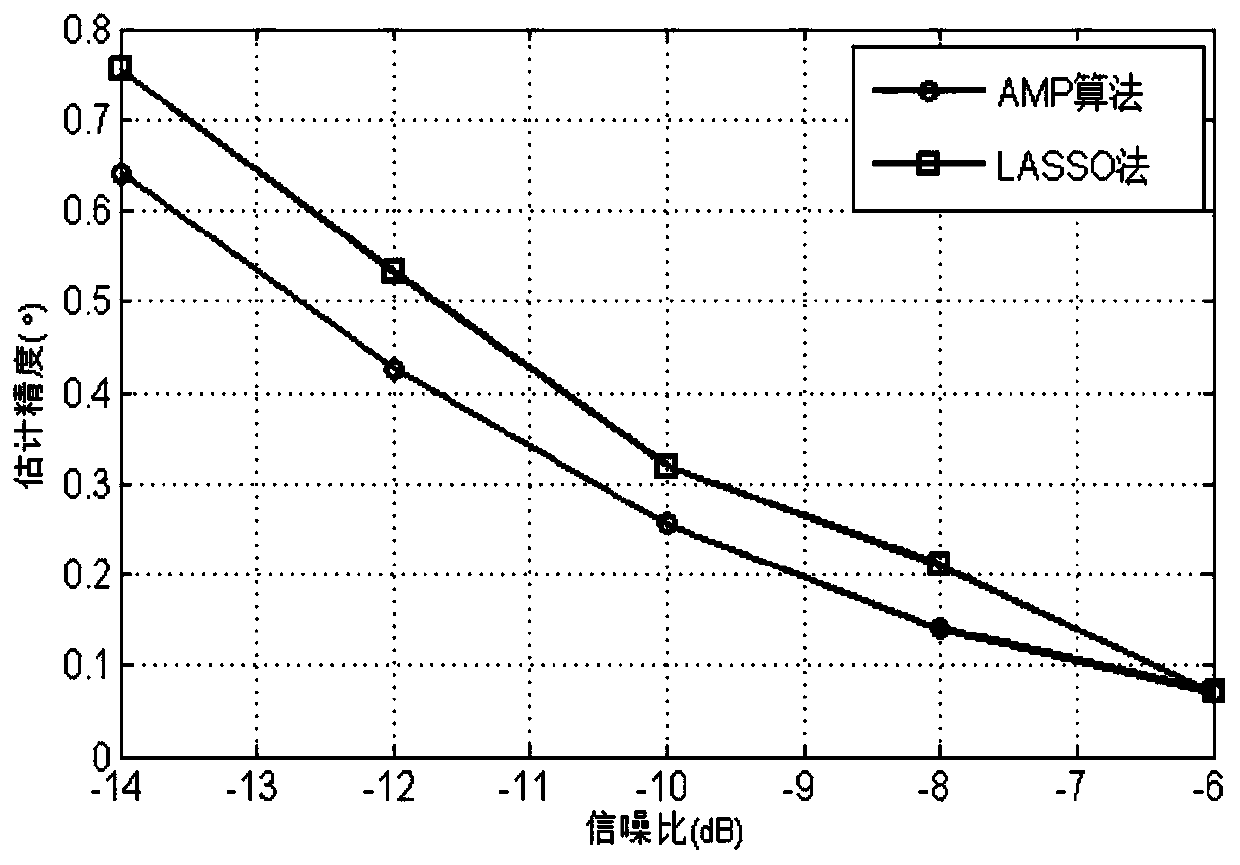Fast target angle estimation method based on sparse Bayesian learning
A sparse Bayesian and target angle technology, applied in the field of array signal processing, can solve problems such as limiting the application of algorithms
- Summary
- Abstract
- Description
- Claims
- Application Information
AI Technical Summary
Problems solved by technology
Method used
Image
Examples
Embodiment Construction
[0076] The present invention will be further described below in conjunction with accompanying drawing:
[0077] figure 1 It is a process flowchart of the present invention.
[0078] A kind of fast target angle estimation algorithm based on sparse Bayesian learning of the present invention comprises the following steps:
[0079] S1 conducts the parameter to be estimated γ j ,j=1,2...N and σ 0 Initialization of these parameters to be estimated provides the basis for subsequent EM algorithm iterations;
[0080] S2 uses the AMP algorithm to quickly obtain the posterior probability density function of the signal at each moment. This step requires multiple iterations of the AMP algorithm until the AMP algorithm converges;
[0081] S3 uses the EM algorithm to update the parameter to be estimated γ j ,j=1,2...N and σ 0 The value of , this step requires multiple iterations in combination with S2, that is, every time p(x j |y), j=1, 2...N, perform a S3 calculation, and repeat the...
PUM
 Login to View More
Login to View More Abstract
Description
Claims
Application Information
 Login to View More
Login to View More - R&D
- Intellectual Property
- Life Sciences
- Materials
- Tech Scout
- Unparalleled Data Quality
- Higher Quality Content
- 60% Fewer Hallucinations
Browse by: Latest US Patents, China's latest patents, Technical Efficacy Thesaurus, Application Domain, Technology Topic, Popular Technical Reports.
© 2025 PatSnap. All rights reserved.Legal|Privacy policy|Modern Slavery Act Transparency Statement|Sitemap|About US| Contact US: help@patsnap.com



